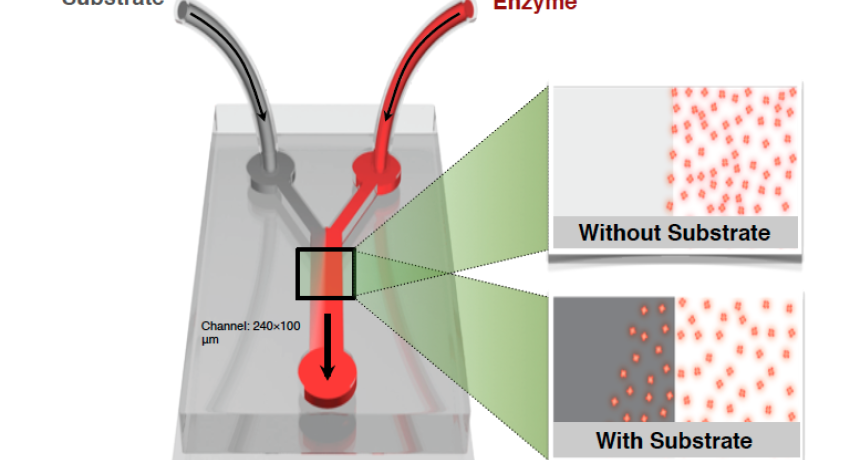A Y-shaped microfluidic device generates a gradient in the concentration of “substrate,” the fuel for an enzyme. Both catalase and urease enzyme molecules move towards areas of higher substrate concentration, the first demonstration of chemotaxis by enzyme molecules. By using glucose oxidase and glucose to generate a hydrogen peroxide gradient, we also induce the migration of catalase towards glucose oxidase – a more complex sequence of chemical triggers. This control over the motion of individual molecules through chemical gradients mimics similar processes in biology and extends our ability to manipulate objects on the nanoscale."
Credits/Names: Penn State MRSEC DMR-‐0820404: Samudra Sengupta, Krishna K. Dey, H. S. Muddana, Tristan Tabouillot, Michael E. Ibele, Peter J. Butler, Ayusman Sen (J. Am. Chem. Soc., 2013, 135, 1406)
Download PDF Version:
Year of Highlight: 2013
IRG: IRG 2 - Powered Motion on the Nanoscale


